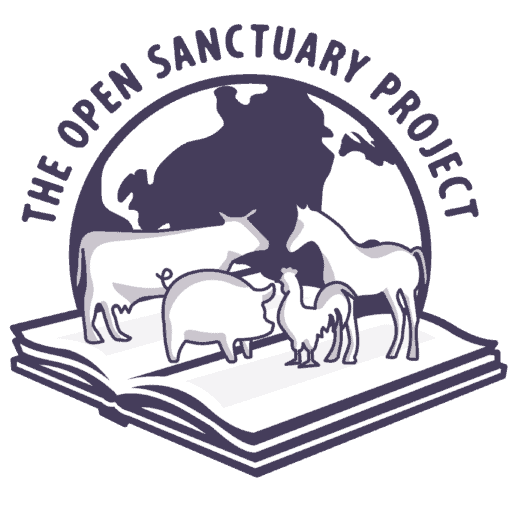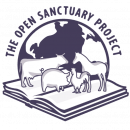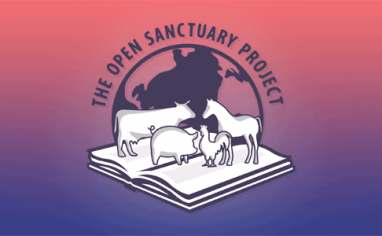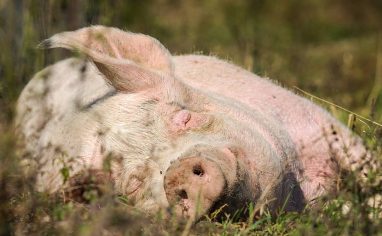
Subscribe To The Open Sanctuary Podcast
If you’d like to get the latest episodes of The Open Sanctuary Podcast, you can subscribe for free on all Podcast platforms, including Apple Podcasts and Spotify!
Episode Notes
Executive DirectorThe individual formally in charge of final decision making at an organization, who sometimes works closely with the organization’s Board of Directors. Sometimes a Founder is an Executive Director, especially early in a nonprofit’s growth stages. Mckenzee and our friend and volunteer Kyle Behrend discuss The Open Sanctuary Project’s brand new Animal Database! This project was long requested by the sanctuary community because keeping thorough, up-to-date records of your residents’ health and life events is a critical aspect of sanctuary care. To make the record-keeping process as simple and efficient as possible, we teamed up with Kyle to create the Animal Database, which you can now copy and begin using today! Keep listening to learn more about the Database, the thought process behind it, and how to use it!
—
This Episode’s Referenced Open Sanctuary Project Resources:
- The Open Sanctuary Project’s Animal Database | The Open Sanctuary Project
- Finding The Right Record-Keeping System For Your Sanctuary | The Open Sanctuary Project
- Animal Sanctuary Record-Keeping Basics | The Open Sanctuary Project
Episode Transcript (Auto-GeneratedThe following content was transcribed through an automated process and may contain transcription errors or misspellings.)
Mckenzee Griffler: Hey there, sanctuary and rescue friends, and welcome to another episode of the Open Sanctuary Podcast. We hope you’re doing well out there. I am the Open Sanctuary Project’s executive director, Mckenzee Griffler, and today we have something very exciting to share with you and a special guest to help walk us through it. This month, we released a brand new tool that any sanctuary, rescue, shelter, or animal caregiverSomeone who provides daily care, specifically for animal residents at an animal sanctuary, shelter, or rescue. can use right now to help improve the lives of the residents in their care. We are talking about the Open Sanctuary Project’s animal database. This system is built on the Airtable website’s software and is at the time of recording free to use for 10,000 records so that you can try it out at no risk to your wallet. We’ve been long requested to provide something like this for the sanctuary community and we are so grateful that it was developed by our friend and sanctuary volunteer Kyle Barend along with the help from our staff member Tara and input from the sanctuary community. Kyle’s here to help us walk through a bit of the background, some system features, how to get started with it, and a lot more. Hey, Kyle.
Kyle Behrend: Hi. Thank you so much for having me.
Mckenzee Griffler: Thank you so much for being here and thank you so much for developing such a wonderful system. To get us started, I think we’ll start with the basics. What exactly is an animal database and why is it a valuable tool for animal sanctuaries and rescues?
Kyle Behrend: It’s a great question, isn’t it? I think to answer this question, I’ll go back into my history. I worked at Edgar’s MissionThe stated goals and activities of an organization. An animal sanctuary’s mission is commonly focused on objectives such as animal rescue and public advocacy. Farm Sanctuary for just over 13 years. And it’s so important for sanctuaries, especially as they are providing the utmost and highest care to these animals, to be able to record, monitor, and then implement changes based on this. You know, we’re working in such a new field in terms of providing care to farmed animalsA species or specific breed of animal that is raised by humans for the use of their bodies or what comes from their bodies., which often are seen in a very different lens, especially when you’re looking at it from veterinary or agriculture scope. And a lot of the time the care that’s provided to them is very new or unique. And I think it’s so important that sanctuaries have a way to monitor firstly how the animals are doing currently and then if there is any illnesses or treatments to actually then be able to record that and then measure that over time and to be able to use that as a reference to come back to if they come into similar situations in the future. I see these databases as really a fundamental tool in terms of animal care to be able to really provide the best and utmost highest standards of care to the animals that the sanctuaries care for.
Mckenzee Griffler: So stepping back, why don’t you introduce yourself and the kind of work that you do to help animals?
Kyle Behrend: Yeah. No, sure. So, as I mentioned, I spent 13 and a half years at Edgar’s Mission. I had a range of roles there, but primarily focused on developing systems to help us care for the animals and to do it in an efficient and effective manner. And it was actually through that experience that part of this animal database was ideated because of such a hard time we found finding an animal database which I’m sure we’ll speak about in a little bit, but currently I now still do a little bit with sanctuaries, but I focus more in the animal charity space and helping mainly with AI and automations and some system work. So AI is my new craze and very passionate about how it can help nonprofitsNon-governmental organizations whose primary purpose is something other than selling goods or services. make a bigger impact.
Mckenzee Griffler: And that will definitely be the topic for a future podcast if you’re interested. So what exactly is Airtable? What can it do? And why is it different than say using paper records or templates that Open Sanctuary provides or even something like Excel?
Kyle Behrend: Well, I mean firstly I think we built so many of the database functions on the resources that Open Sanctuary provided, those templates. We’ve just really tried to digitize them. And I really often just say that Airtable is like a spreadsheet on steroids. It’s just got a bit more functionality than Excel or Google Sheet. And in particular, there’s one feature that we really use a lot, which is called linking records. And that allows us to have multiple tabs within this table that can all be linked to the primary tab, which is our animal. And that allows us to record historical data. And so you’re often looking at, you know, weight history or treatment history when we’re looking at an animal’s record. And there could be quite tricky to do in a scalable way when we’re looking at Excel or Google Sheets. And even with paper, you know, you’re kind of going to get to the end of your piece of paper and then where do you go from there? Whereas with Airtable, it’s very, very scalable in that we can continuously monitor weights and then link those weights to an animal and just build this out infinitely really. If you wanted to weigh them every single day, you could. And so that’s one of the primary features of Airtable. I think there’s a few other benefits to it. One is that there’s a free tier that you can, you know, really try it out without investing heavily financially or time-wise into the software. The second is that it’s a very powerful database that a lot of organizations are using. And because of that, we’re seeing a lot of other solutions that are being built on top of Airtable as well. So if you want to get a little bit fancy, you can use Airtable but in a much more advanced way for more advanced users. So I really like that. I think the customization of it, the flexibility, and the scalability really play a huge role in terms of why we selected that as the platform. In terms of just quickly touching on the paper, I think it’s so important now to be digitizing records. Paper can get damaged. It’s not scalable. We’ve got people writing in different handwriting which can make it really hard to read and these records can get lost over time. But the biggest thing I find is that it’s very hard to be able to reference these from other media. What’s great about Airtable is that you could have sanctuary staff or volunteers that are accessing these records on a tablet out in the paddock with the animal or you could actually take that laptop or your phone to the vet and have the vet see this historical record all there without needing to find the specific paper files and where it is because it’s all living online in the cloud. You’re able to access this data anywhere that you’re able to get an internet connection.
Mckenzee Griffler: So, we talked a little bit. You mentioned weight, you mentioned things like vet records. What other records would you see sanctuaries who are just getting started with the concept of moving to a digital animal database? What kind of records do you see them really benefiting to start utilizing through this system?
Kyle Behrend: So, I think weight is important, temperature, I think the main thing that most sanctuaries are doing is regular health checks. And it can be quite tricky to record all of that data without a solution like this, that you can again monitor animals’ health month on month or week by week. And so there’s a whole range of different health checks that we built into the database. But as I said, it’s very customizable and flexible. You can add anything that may be specific to your sanctuary. But I think weight, temperature, health checks, we’ve got animal movements to different paddocks. Everything that we put there, I think is a great place to start. But because it’s so scalable, you can kind of pick and choose where you do.
Mckenzee Griffler: Absolutely. One thing that I really liked when I was going through the system was just how everything in the system is so interconnected. Like you have your residents, but you can split them up very quickly by what living spaceThe indoor or outdoor area where an animal resident lives, eats, and rests. they’re in or what breed they might be or their health status or, you know, like the fact that you can just look at one animal’s overview and then you can see all their vet visits and you can even upload the actual vet report to it to make sure that you’re not missing anything without having to work overtime to transcribe a vet’s handwriting, but you can still get the details in as you’re going to the vet visit. And I am so excited. At Open Sanctuary, we’re always saying, yeah, if you have to use paper documents, we’ve got templates for you. We’re really excited that you’re doing this. But if you’re ready to step up and work into a system that is going to give you a more holistic control over your data and really let you look at historic trends for what’s been going on with your residents. This is just such a powerful tool in animal care and that’s why we’re so excited that you’ve developed this system for all these organizations. And I know that you chatted a lot with Tara and possibly with some other sanctuaries or in your own experience. What kinds of features did you find were really important for sanctuaries to have in this kind of database, especially things that weren’t being well served in other solutions already out there that sanctuaries might have been trying to adapt?
Kyle Behrend: In my personal experience, what we found was we had agricultural software that sat on one side which really didn’t suit sanctuaries. You know, you couldn’t even provide a name for an animal in a lot of them. They were just identified by tags or numbers. Then we had this veterinary software that kind of sat in the middle which was useful but wasn’t ideal because it’s really developed for vets and so it was very focused on appointments and follow-ups and things like that. And then all the way on the other side that we had zooAn organization where animals, either rescued, bought, borrowed, or bred, are kept, typically for the benefit of human visitor interest. and aquarium software which was probably the best fit for a sanctuary but again I just found there were way too many functionalities within it that just complicated it far beyond the scope of what it needed to be and again lacked some of the customizable functions that we needed. So I think Airtable does a really good job in being able to bring these elements together that we’re able to design something leveraging that very powerful software that really suits sanctuary’s specific needs. As you mentioned before, we can filter all of our data on any type of field. So, we can create beautiful views where we can see all of our current pigs, all of our current chickens, all of our current sheep. And you can even go deeper. You could go current sheep within a specific paddock or current chickens within a specific paddock. And that just allows so much flexibility in terms of being able to have that source of truth. This is one of the challenges I think with sanctuaries and I’ve seen this across the board where you’re possibly going to have whiteboards or notes floating around where you’ve got these animals are in this paddock, these ones are here and this is some information and to be able, if you move an animal from one location to another, it’s got to get updated sometimes five, six, seven places around the property whereas if you have this database that acts as that source of truth, that centralized knowledge of exactly what’s happening and what has happened to these animals, it makes life a whole lot easier because anyone who accesses that data is able to access live data of what is currently happening and to be able to filter it for their specific needs. And just as you mentioned as well, one of the great things about Airtable is that we can add these uploads or images or star ratings or checkboxes. So, you can, to a degree, do some of this within like an Excel or a Google Sheet, but really not to the scale that we can with Airtable. And so it makes it a much more visually appealing experience as well. And you’re able to bring up the animal’s record and see an image of them right away. That’s very powerful because again it can be really difficult if you provide staff or volunteers with a list of animals. And if you don’t have photos to link with them, it can be really tricky to actually identify who’s who unless you’ve got identification bands or collars, etc. And one of the things that I just love which I think is just so simple but so powerful with something like Airtable is you can upload multiple images of these animals. So, especially if you have an animal that grows in your care, comes as a little baby, you take a photo of them and as they continuously grow, you can just add more photos. So, you can see this historical record not only visually, but then also get a current photo of what the animal looks like. So, it makes it very, very easy for identification and treatment over time.
Mckenzee Griffler: So, what kind of setup is required to get this going? I know on our website you’ve provided extensive video tutorials which are super detailed and wonderful for walking even a luddite like me through the system. But for those who are listening and who are interested who might feel a little intimidated about the concept of setting up a database, could you walk us through the basics?
Kyle Behrend: Yeah. So again, another amazing feature of Airtable is that we can create this template and then allow it to be duplicated onto anyone else’s system. To get started, it’s as simple as clicking on the link that we provide that takes you directly to that database that you can actually interact with and see what it does look like from an external perspective. And if you decide to follow the path, you simply click, you know, copy this base to your account. You can create a free Airtable account if you don’t have one already. And within seconds, you will have a complete replica of that database sitting on your system. The one thing that’s missing is the automations. This is a little bit more advanced, but we do have videos that guide you through exactly how to do that. And that is simply just to help if you’re moving multiple animals from one location to another or you’re doing multiple vaccines to a group of animals. It just streamlines that process. So it’s not something that’s 100% necessary, but I think if you go through that process, it will make life a little bit easier. But the great thing about this template is you can install it onto your system. You can mess around with it as much as you like. All the data that is there is just dummy data, but it shows you a good view of what’s possible. And then you can clear out and simply get started with your own animal data. So, it’s very, very easy to actually get started using this.
Mckenzee Griffler: So, what are some costs associated with using this system? We mentioned that at least at the time of recording a thousand records don’t require any cost, but you know, I know sanctuaries are always looking to make sure that everything is within their budget. So, where can costs go with an Airtable system like this?
Kyle Behrend: So, yes, you can start for free. You get 1,000 records. I think most sanctuaries are going to outgrow that pretty quickly. So, you’re looking at $20 per user per month. Now, Airtable is very generous. They do offer a nonprofitA non-governmental organization whose primary purpose is something other than selling goods or services. discount of 50% at the time of recording. So, hopefully that still stays true, but you’re already looking now getting that down to $10 per user per month. Now, where this can get tricky is I can imagine a lot of listeners are thinking, “Oh, well, we’ve got, you know, 10 people that need to access this database or 15 people that need to access this database”. All of a sudden that’s $150 a month and could be growing as you get more records. But the great thing about this database is that you don’t need to provide a paid user to everyone to access it. So, I really recommend paying for two users, like a primary admin and then someone else who needs to access this backend data. But because we leverage the power of forms a lot in the setup, we allow other users to input data into the database without needing to have access to the backend. So this is beneficial both from a cost perspective as well as a data security and privacy one. And that allows you to even do something like create a QR code that links to the link for a form that allows a volunteer or staff member to add data to the database without needing to actually log into the system directly. So we’ve created forms for pretty much every single one of the different inputs and those could be moving the animals to different locations, an observation, different animal treatments and health checks, weights, hoof trims, vet visits, vaccines, labs, dental, transportation, etc. Even adding a new animal. So, if a new animal comes in, it can be as simple as bringing up this animal intake form, providing as much content as you can at that time, and then submitting, and then we’re going to have this animal’s record provided to the database. So, I think, you can really get away with one or two I recommend paid users, but then leveraging these forms to allow other people to input data without necessarily needing to pay for additional users.
Mckenzee Griffler: And that information and so much more is available on the resource which will be linked in the show notes and will be very easy to find on our website. And I know you were really excited about some of the more advanced ways that Airtable can be leveraged even beyond what you’ve already talked about. So for sanctuary folks who are even a little bit more technically inclined or who are ready to get in the weeds. What else could you do with this system?
Kyle Behrend: This is where it can go into so many different directions. I love automating as much manual work as possible. So, as I mentioned, there are a couple of automations that are available for you to build following the video that help with moving multiple animals from one location to another or giving them a vaccine. And so, for anyone who’s a little bit more advanced, starting to learn and leverage these automations within Airtable can be incredibly time beneficial. And if you’re looking at external tools as well, if using something like make.com or Zapier, they have really powerful integrations with Airtable that allows you to do automations as well. So one quick example of something like that is if your sanctuary leverages Slack, which I think is a very useful communication tool and offers a very generous nonprofit plan as well. You could have an automation that functions that say when an animal does move from one location to another, we actually send a message in a Slack channel called animal movements that says, “Okay, animal X has now moved to paddock Y”. And so you can now leverage both the power of the database with the power of a communications tool like Slack to really bring these elements together. So I think the automation space is really exciting. The other potential to grow into is actually turning this database into an interface. So an interface is like an app or web app-based system that makes it look a bit nicer and provides a bit more functionality than what we can just do straight in the Airtable database. So there’s two ways to go about this. The first is actually leveraging Airtable’s interface builder which can be useful but I really enjoy other tools like Softr or Frontly where again, you’re leveraging the database in Airtable, but you’re building this whole front-end interface on top of it that can be hosted on a custom domain or on a specific URL that then different volunteers and staff members can log into and find a whole range of resources both animal data related, but also other related to your sanctuary. They can access policies and procedures or other resources that you want to provide, videos and training can all live within this centralized hub that’s hosted on Softr or Frontly but then also allow them to access this animal database. So I think those are the two areas which really excite me. You can really turn this into a whole web app.
Mckenzee Griffler: Yeah. And I remember the Softr front end that you showed for the database like for the dummy database and it was just so beautiful and I could think of so many ways that sanctuaries could display this information both internally and externally and really the possibilities are endless. But the thing that’s so beautiful about this system is if you just want to use the basics, the basics work. Like you don’t have to have an advanced degree in Airtable or databases to get started with it, but there is so much room for expansion and growth if you want to get into it and I think that’s what is so exciting about it to me. What excites you most about a system like this being made available to sanctuaries around the world?
Kyle Behrend: I am very system focused. I’m always looking for how can systems support the work that humans do. And it’s been quite sad, I think, that we’ve never seen a solution made available for sanctuaries, especially in such an important tool. And so, I think what really excites me the most is just how accessible it is and scalable it is. As you said, you can take this database and just clone it and start using it right away today without needing any technical expertise. If you’ve used a Google Sheet or an Excel spreadsheet in the past, you’re going to pick up on this really, really easily. There are a couple of different fields as we mentioned, attachments and ratings, etc. And the linked fields is the biggest difference. But once you grasp those little concepts, you’re going to be flying. You can do so much with this database. But then you can scale it into much more advanced systems. And I think that that’s what sanctuary needs. As much as the sanctuary space is its own, not industry, but kind of like sector I suppose within the space, each one is customizable, is different. You know, we’re going to be caring for different animals. We’re going to be caring for them in different ways. We’re going to need to record different data. And one of the big challenges when you buy a software solution that has already been predefined is you lack a lot of that customizable option. And so this makes it really personable towards each sanctuary to be able to run it in a way that makes most sense for them.
Mckenzee Griffler: So as these systems like Airtable mature over time and as technology continues to grow in the way that it’s growing. Why is it important to get started now with a system like this animal database?
Kyle Behrend: I think data collection is going to be one of the most important resources that we provide leading into this AI age because AI is this intelligence that we can apply to information or data and we actually seen this quite heavily within Airtable and other solutions where they building in their own internal AI integrations. We see this with Notion and Airtable as I mentioned Salesforce as well. They’re all trying to figure out, how can we leverage AI into the solutions that we offer and we won’t be able to get any of the benefits from this if we don’t actually have our data in these systems. So, I think it’s really important to start putting in as much data as possible. If you can add historic data that’s going to be even better because as this AI advances ultimately I see a not-so-distant time where we’ll be able to actually ask the AI questions about animals, say, “Look at Percy the pig and identify his weight trends over the last 6 years and see if there’s anything that we need to worry about”. Or we could even have the AI trained that it runs in the background and it’s looking at these metrics and just picking up on trends because AI is very good at pattern recognition. So anything that moves outside of a norm would be a really easy identifier for AI to pick up and say, “Oh, look, that weight’s gone down 10% in the last 3 months. This is something that really should be looked into”. So it’s not about having AI replace us or do the work that we can’t do but it’s about augmenting it and leveraging this data that we can provide to it in a way that we can get even better personalized responses and care for the animals.
Mckenzee Griffler: Yeah. So, what I’m hearing is it’s like it could help us identify things that the data show that we aren’t necessarily privy to before it becomes a larger concern or something that needs critical attention and knowing how much stuff is going on at sanctuaries at all times and the lack of bandwidth of staff. Having an extra pair of digital eyes on that data saying, “Hey, you know, I just ran these numbers and this looks a little off. You should just do an extra health checkThe Open Sanctuary Project uses the term "health check" to describe health evaluations performed by caregivers who are not licensed veterinarians. While regular health checks are an important part of animal care, they are not meant to be a replacement for a physical exam performed by a licensed veterinarian. or maybe it’s time to bring that up to the vet”. That could be life-saving in some situations.
Kyle Behrend: Exactly. Exactly. It is. It’s about just having an extra set of eyes that can just look over your data almost 24/7 and just help you help us care for the animals in the best way possible because I think at the end of the day, that’s all sanctuaries are all trying to do. You know, we’re all just trying to provide the best care possible to the animals in our care and it’s tools like this that really help enable that so that the animals get what they deserve.
Mckenzee Griffler: Well, I could not have said it any better myself, Kyle. Thank you so much for your time and your incredible volunteership on this project. We’ve already heard from so many sanctuaries out there who are incredibly excited to explore this system and we hope that this introduction is exciting for listeners who might not have heard about it yet.
Kyle Behrend: Well, thank you so much for the opportunity and yeah, I look forward to hearing how more sanctuaries start using the software.
Mckenzee Griffler: Thanks again for listening. Everybody, this has been another lovely episode of the Open Sanctuary Podcast. As always, if you have questions, comments, resource questions, or requests, or podcast topics you’d like us to talk about, please feel free to get in touch by using the contact form on our website. All right, talk to you later.

Got A Podcast Idea? Contact Us!
If you have a topic or question you’d love to hear our staff address on The Open Sanctuary Podcast, please get in touch via our contact form!
